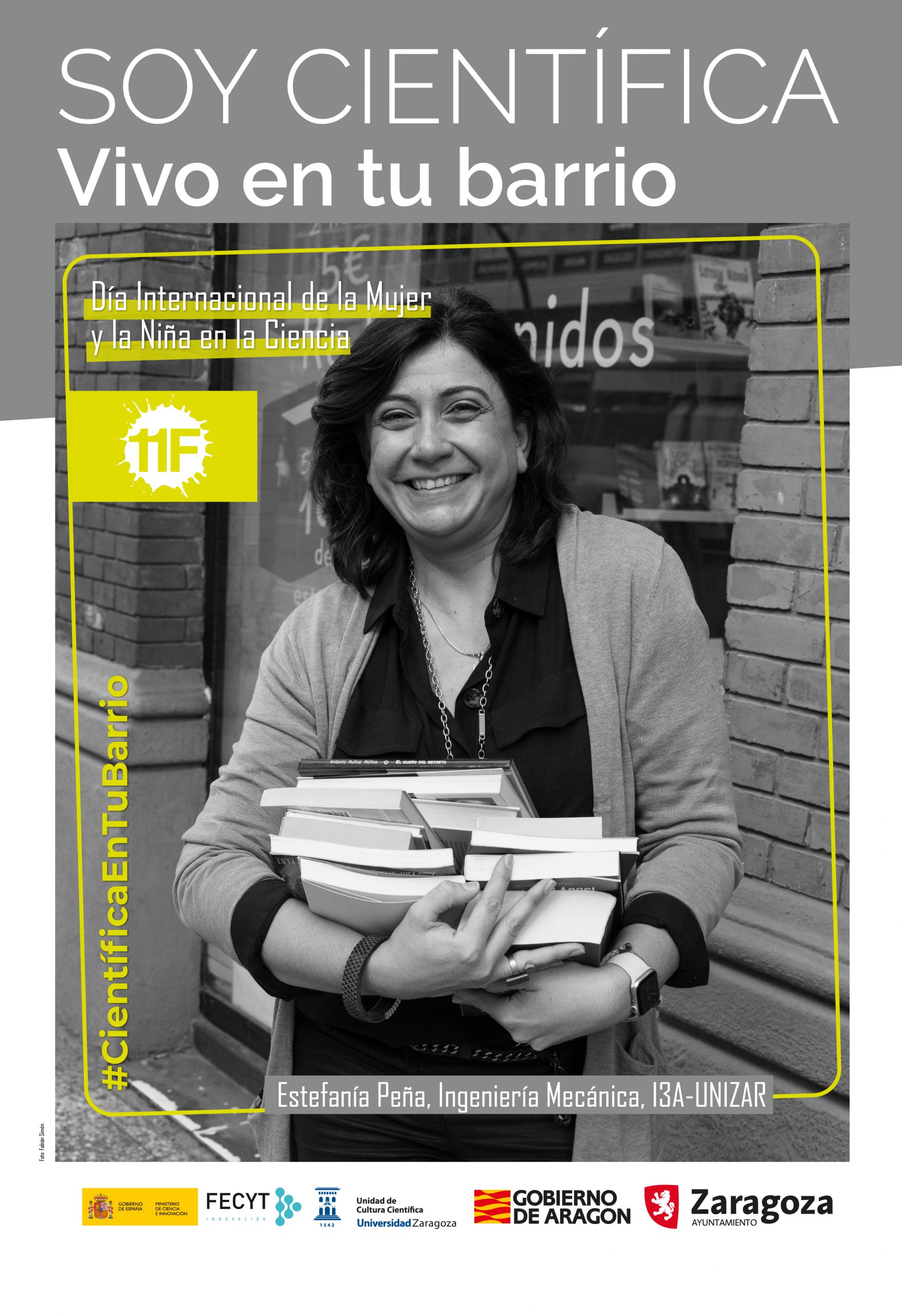Women Scientists in your neighborhood: Estefanía Peña
The International Day of Women and Girls in Science on February 11 honor women’s significant achievements in science and place a much-needed focus on girls entering Science, Technology, Engineering, and Mathematics (STEM) careers. We want to take this day to congratulate all the women scientists, especially to our scientists at NANBIOSIS ICTS, some of whom take an active role in the organization of events to celebrate this day, as Estefanía Peña in the initiative “Women Scientists in your neighborhood” form the University of Zaragoza.
Estefanía Peña is the Cientific Coordinator of Unit 13 of Tissue & Scaffold Characterization from the ICTS NANBIOSIS since the creation of the Unit in 2007 by the Network Biomedical Research Center in Bioengineering, Biomaterials and Nanomedicine, (CIBER-BBN) and the University of Zaragoza-I3A. Estefanía participates this year in the Campaign “I’m a Scientist, I live in your neighborhood” organised by Scientific Culture Unit of the University of Zaragoza to break stereotypes that present the women scientists as heroines, geeks or with little social life, while the scientists who live in our neighborhoods show the reality of a vibrant and exciting career choice, to vindicate the role of women in science, break the gender gap and offer close references to girls and adolescents.
“My name is Estefanía Peña and I am Professor of Mechanics of Continuous Media and Theory of Structures at the School of Engineering and Architecture. In addition to teaching, I am dedicated to research in the field of Biomedical Engineering at the Engineering Research Institute of Aragon (I3A).
I am delighted to share with you the story of why I ended up being a scientist and dedicated myself to research in Engineering applied to Life Sciences. I was born in Zaragoza and have lived in Zaragoza practically all my life, except for a few short periods in France and England. From a very young age I liked science, but I have always had a split heart between physics and mathematics and literature and history. Since I was little, I also liked teaching, and my classmates know that in exchange for a snack I gave classes to whoever asked me. In the end I opted for mathematics and physics, because I was attracted to knowing when and why things happened, and since then I have dedicated much of my time to continue learning about the world around us and reading books in my spare time. literature and history, the mountains and gardening. I have always had the support of my family and friends who have understood and supported a woman dedicating herself to a field that until a few years ago was traditionally masculine and now is no longer. Just to say that among my colleagues we are equal parts men and women. I have a fantastic family and being a mother has made me value even more the things I do and what I dedicate my time to. That is why I know that dedicating myself to research and teaching is something fantastic and that it fills me with gratitude to know how lucky I am.
I started my Engineering career in the specialty of structures and then the doctorate in Biomechanics, the branch of Engineering that applies the principles of Mechanics to Life Sciences such as Biology, Veterinary Medicine and Medicine. I was especially attracted to this field because I find that applying Engineering to something as warm and rewarding as trying to improve people’s lives every day is an exciting profession, developing diagnostic, treatment and/or surgical techniques, medical instruments and devices and treating to contribute a grain of sand to make this world better. In my work I live surrounded by great people, I love meeting new people, helping to train new scientists and enriching myself with knowledge.
I am delighted to participate in this initiative with my colleagues, all of them fantastic scientists who in their day to day show that science is open to women and that it is a fascinating way to make this world a little better.”









